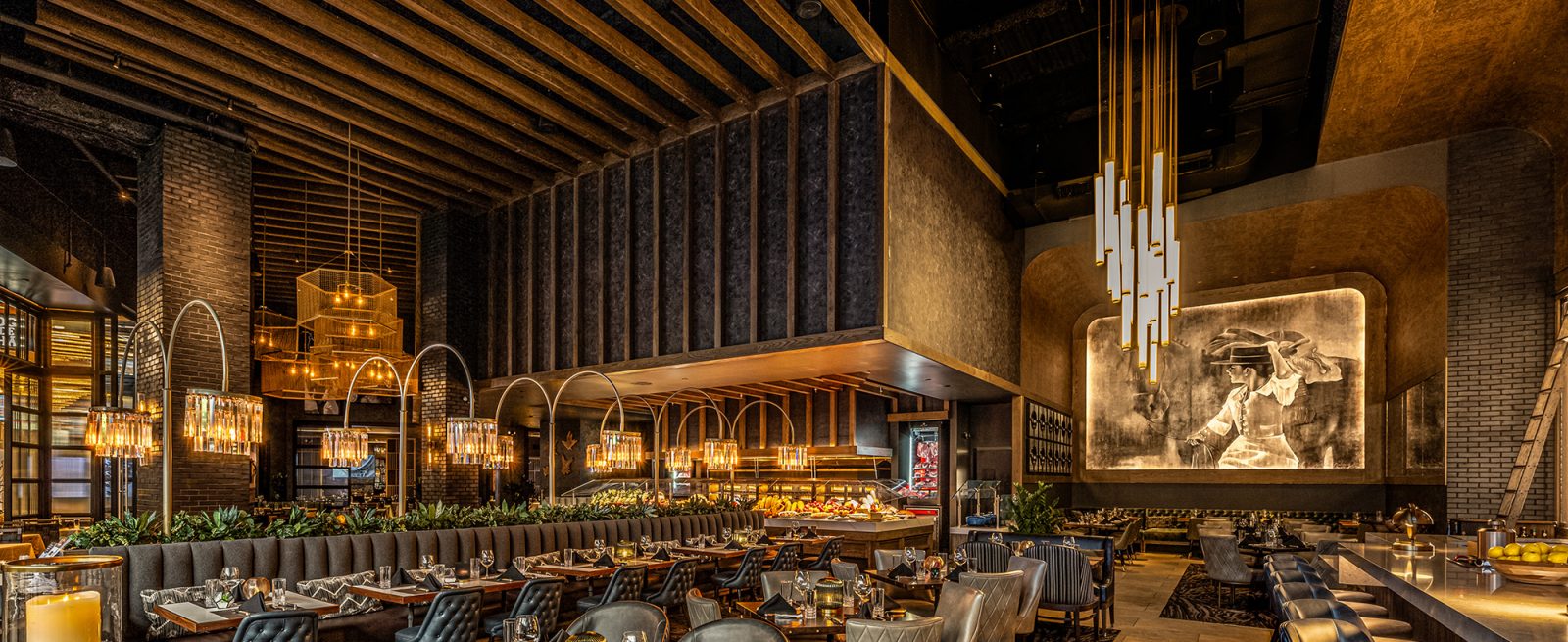2025 Restaurant Design Trends: Elevating Guest Experiences with Innovation and Flexibility
4 Min Read By Keith Anderson
As the restaurant industry moves into 2025, design is taking center stage as a key driver of guest experience, operational efficiency and brand storytelling.
Today’s diners expect more than just good food—they seek environments that captivate, connect and surprise. Mintel’s 2024 Global Consumer Trend ‘Relationship Renaissance’ revealed that coming out of the pandemic, consumers expressed an eagerness to seek connection with purpose.
At Harrison, we’re seeing four emerging trends shaping the future of restaurant spaces driving at purpose: dynamic bar areas, local element integration, flexible layouts and playful, art-centric designs. Let’s explore how these trends can help restaurant operators thrive in the year ahead.
The Bar Area: A Destination, Not Just a Feature
In 2025, the bar will continue to evolve from a functional space to a destination within the restaurant. Beyond serving as a place to grab drinks, the bar is becoming a hub of social interaction and a key driver of revenue.
Design is more than aesthetics, it’s a strategic tool for enhancing guest experience, driving operational success and telling your brand’s story in an ever-competitive space.
Positioning the bar as a brand extension and understanding the role it plays within the experience is a critical component. Some brands may consider that they can offer an experiential focused bar menu for a more approachable price point for the consumer who may not opt for a full dining experience.
Operators are rethinking bar design to maximize its versatility—creating spaces that work equally well for solo diners, couples and groups to accommodate different ages and other demographics. Expect to see bars that blur the lines between form and function. Innovative lighting that shifts from day to night and elevated barstool comfort are just a few examples.
Additionally, bar menus are expanding to include more interactive elements such as pairing menus with the food and tasting flights, encouraging customization and choice, resulting in longer stays and higher spending. Investing in a thoughtfully designed bar area can set your restaurant apart as a go-to gathering spot.
Local Element Integration: Telling a Story Through Design
Diners crave a connection to the communities they’re in, and restaurant design is increasingly reflecting this desire. Local element integration and jurisdictional expertise, incorporating geographically relevant and authentic design features, adds a sense of place to your establishment and bolsters brand affinity. This could mean showcasing regional materials, collaborating with local artists and contractors or even incorporating historical elements unique to the area. National brands have begun to flex by market utilizing this approach allowing them to compete with local concepts challenging the big chain persona.
For example, a downtown Brooklyn eatery might highlight the city’s architectural heritage through exposed brick, vintage lighting fixtures or industrial naval metal work. Not only does this approach create a distinctive atmosphere, but it also fosters a deeper emotional connection with guests, turning first-time visitors into loyal patrons.
Flexible Layouts: Adapting to What Works
In a rapidly changing industry, adaptability is key. Flexible layouts are becoming a must-have for restaurant operators looking to maximize both revenue and guest satisfaction. Our commercially savvy designers are prioritizing focal points within the experience designing to the guest need state (centralized bar vs. open kitchen vs. private dining room) with the premise of flexibility. A space designed with adaptability in mind allows operators to experiment with different table arrangements, seating configurations and event setups.
This trend goes beyond simply being able to move tables around. Banquet seating, sliding partitions and retractable walls enable restaurants to transition seamlessly between lunch rushes, intimate dinners and private events. By embracing flexibility, restaurants can optimize their spaces for what books best and pivot quickly as customer preferences evolve.
Playful, Art-Centric Design: Creating Memorable Moments
Restaurants are no longer just places to eat, they’re experiences to be shared, photographed and remembered—especially on social media. Physical locations serve as a tangible backdrop against which self-expression unfolds and thrives, as explored in the Mintel Trend ‘Flexible Spaces’ (2022). Playful, art-centric design is gaining traction as a way to stand out in a crowded market and appeal to the social media-savvy diner. This insight celebrates creativity and boldness, turning dining spaces into visual playgrounds that connect with their diner.
From signature installations to walls adorned with custom, interactive murals—some examples of design elements we’ve used for our client projects—the goal is to create a sense of delight and discovery. Lighting, texture and color all play critical roles in building an environment that surprises and charms. Importantly, these elements should align with the restaurant’s brand identity. Playfulness doesn’t mean randomness. When executed thoughtfully, art-centric design transforms your restaurant into a destination that guests want to return to, again and again.
Bringing It All Together
Design is more than aesthetics, it’s a strategic tool for enhancing guest experience, driving operational success and telling your brand’s story in an ever-competitive space. By embracing trends like elevated bar areas, local element integration, flexible layouts and playful, art-centric design, restaurant operators can position themselves for success in 2025 and beyond. The key is to stay authentic, adaptable and guest-focused. After all, a well-designed space isn’t just beautiful, it’s a catalyst for connection, delight and lasting memories.

